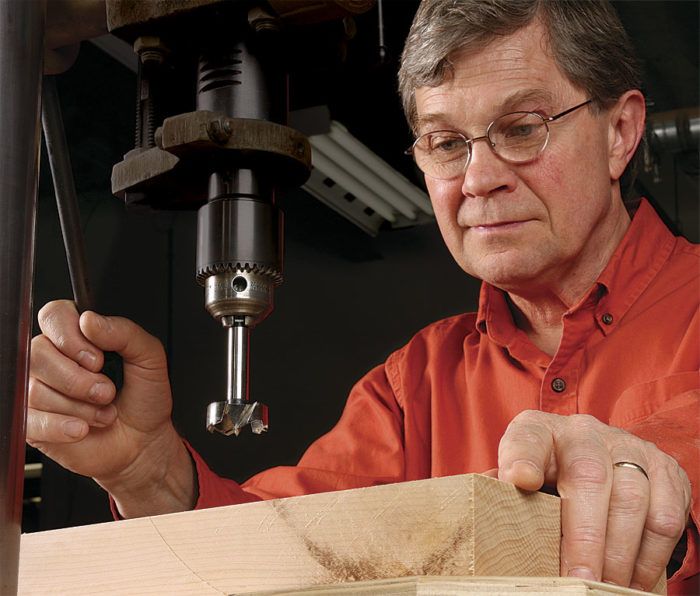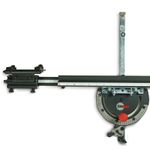What Drill Bits do You Really Need?
An expert guide to the essential drill bits for woodworking.

Synopsis: Here is some time-tested guidance on drill bits for the woodworking shop: which types to buy, and how to save some money when you’re buying them. There are many different kinds of drill bits out there, but with this advice from Fine Woodworking tool guru Roland Johnson, you won’t go wrong.
No matter what kind of woodworking you are doing, eventually you’ll have to drill a hole in something. Tasks can range from drilling pilot and clearance holes for screws to mortising for chair legs. There are a few basic requirements for drilling accurate, concentric holes: The bit must create a clean entry, run concentrically so that it produces an accurate bore, and have appropriate cutters and geometry for the material being cut. Finally, it should clear away waste during the cut.
There are many types of drill bits out there, and it can be tough to make the right choices, especially if you’re just starting out as a woodworker. But don’t worry. I’ve been woodworking for decades, and I’ve drilled holes in all sorts of materials and in every situation imaginable. So here I’ll give you some time tested guidance on which bits you need and why. Before I get to the recommendations, though, here’s some moneysaving advice.
I purchase bits in sets because it’s a good value. Buying a single bit gets expensive, especially if shipping costs are involved, and invariably the one bit you don’t have will be the one you urgently need in the middle of a project when time is of the essence. Yes, I have bits that have never been captured by a drill chuck and may never be, but having full sets of bits in my shop, ready for use, gives me peace of mind. Another big advantage to buying sets is that most come with a case that will keep your bits organized and protected. By the way, all of the drill-bit sets I’ll talk about here are readily available at most woodworking-supply stores.
 Brad-point bits
Brad-point bits
Brad-point bits look like slightly modified twist bits. The bit has spurs machined on the tips of the flutes (some designs simply have the tips sharpened at an angle, resulting in a point at the outside edge) and a centering spur that is slightly longer. The spurs cleanly shear the fibers and the helical flutes efficiently transport waste from the bore. Brad-point bits create clean bores both on entry and during the cut.
Brad-point bits have a downside. They aren’t very good at drilling end grain cleanly. They will cut most angled holes cleanly and efficiently, but if the angle is too shallow (5° to 10° off center), you won’t get good results.
 Twist bits
Twist bits
A jack of all bits, the common twist bit does a good job at cutting a variety of materials—wood, plastics, and sheet goods. However, these bits excel at drilling shallow, small-diameter holes in wood (for hinges and hardware) and for drilling clean holes in end grain.
There are limitations, too. First, unless you’re cutting into end grain, these bits leave some tearout. Twist bits also can meander at the start of the cut if there isn’t a starter hole or center point for the bit to register in. Plus, they’re not great at evacuating chips because of their rather small flutes and they tend to scorch the wood, on occasion creating enough heat to damage the bit. That means they’re not great for deep holes—use brad points for those. Twist bits also are not good for cutting flat-bottomed holes or drilling at angles over 45°.
 Forstner bits
Forstner bits
The ideal wood-cutting bits, Forstner-style bits circumscribe the rim with a slicing cutter and follow the scribe with low-angle shearing wings that leave a flat, clean bottom and a smooth wall. They can be used effectively for overlapping holes and can produce clean, accurate angled holes even when the bit enters the board at a steep angle.
A drawback with Forstner-style bits is the lack of chip extraction in deep bores. As the bore deepens, the chips tend to clog around the bit shank. If the bit isn’t retracted from the bore at regular intervals, the detritus packs tight, sealing the bit in the bore.
Toothed Forstner-style bits are excellent for boring large holes. Sawteeth cut into the rim do an effective job of shearing the end grain, and gullets between the teeth help control the debris. Toothed bits cut much faster than a continuous-rim Forstner but don’t leave as crisp a shoulder.
For the full article, download the PDF below:
Fine Woodworking Recommended Products

Bessey EKH Trigger Clamps

Veritas Wheel Marking Gauge

Sawstop Miter Gauge








Log in or create an account to post a comment.
Sign up Log in